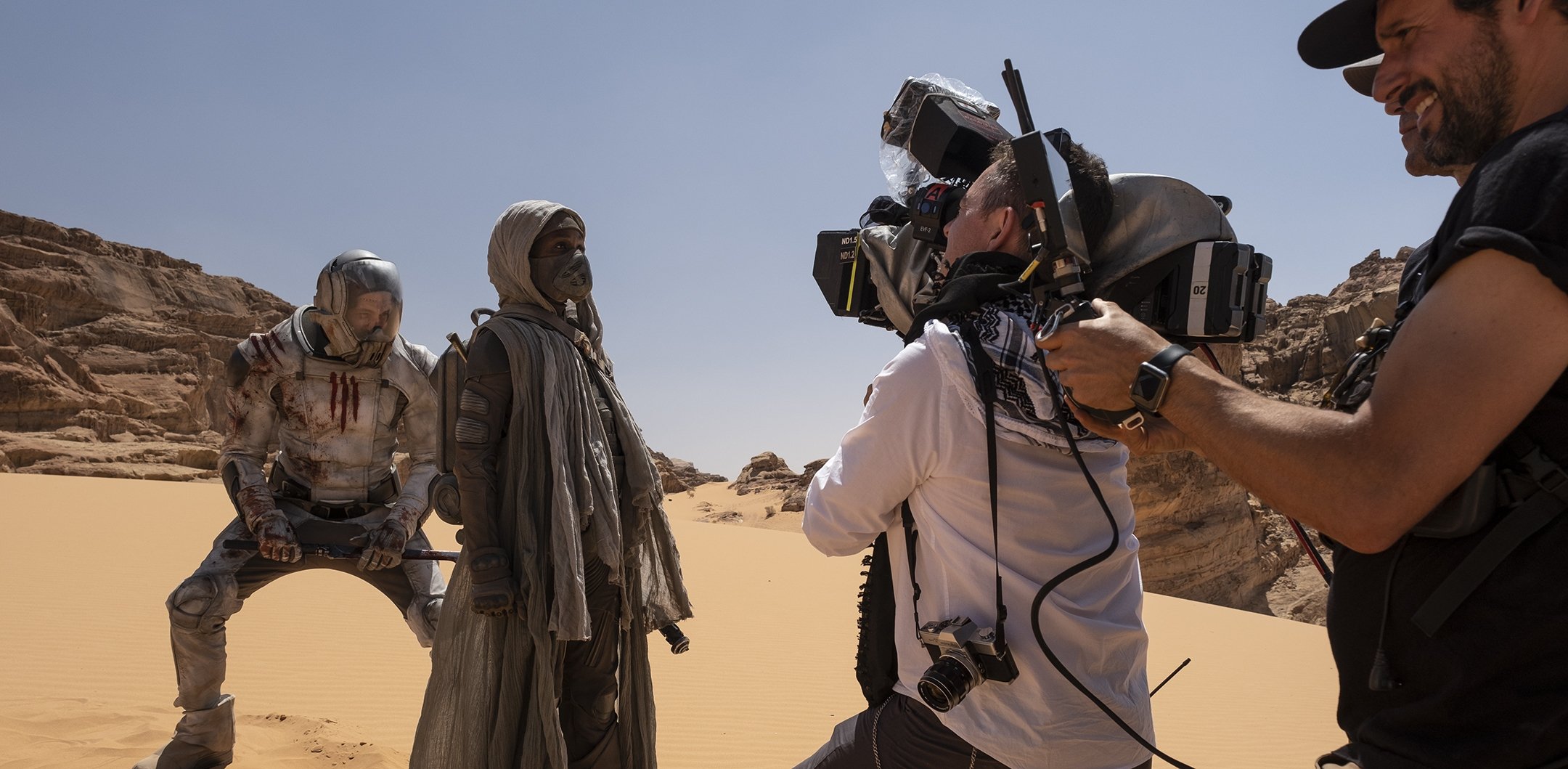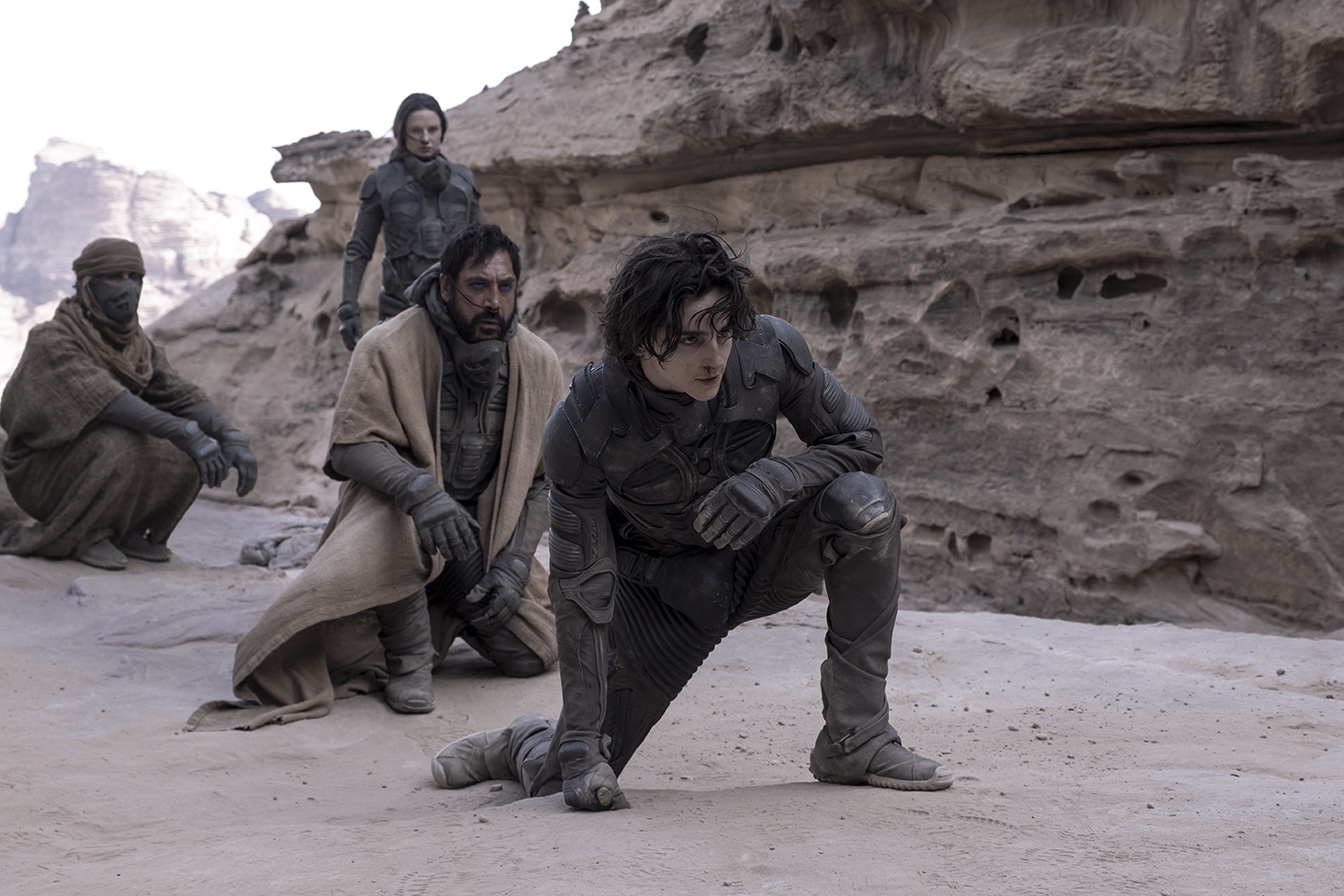
Dune: Part One — Hybrid Finishing: Digital to Film (and Back)
This unique post process done at FotoKem “added a depth and substance to the image that’s a bit intangible,” says Greig Fraser, ASC, ACS.
Photos by Chiabella James, courtesy of Warner Bros. and Legendary Pictures.
One of the creative mandates on Dune: Part One was to ground the movie’s fantastical world in realism. This priority led director Denis Villeneuve and cinematographer Greig Fraser, ASC, ACS to finish the picture with a hybrid of photochemical and digital technologies at FotoKem.
“We weren’t sure in the early days if we would shoot film or digital, and our extensive testing included 35mm, 65mm 5-perf, 65mm 15-perf, digital 35, digital full frame and digital 65,” says Fraser. “We found digital was much closer to the look we wanted, but we also wanted some of the organic feel of film.
“I’d been talking to [FotoKem senior colorist and ASC associate member] Dave Cole for many years about taking a digital master, shooting it out to film, and then scanning it to do the final grade,” continues Fraser, who first worked with Cole on Vice (AC Jan. ’19). “We finally tested that on Dune, and it gave us the perfect balance.”
Cole’s work on Dune began early in preproduction with visual tests, as well as developing LUTs that included a skip-bleach emulation that the filmmakers applied to scenes on the desert planet Arrakis.

After Cole and the filmmakers completed their main color-correction pass of the film in the color suite, Cole supervised a laser-recording film-out to Kodak Vision3 5254 digital-intermediate film stock, which was then scanned back to a digital source, and final grading touches were applied to the new photochemical/digital hybrid.
“This wasn’t a traditional film-out process,” Cole says. “Before filming out, we processed the timed digital master, carefully treating the toe and shoulder of the image so that once we recorded it to film and scanned it back, we’d retain the full range of latitude and detail. Once it was scanned, Joseph Slomka [vice president and principal color scientist at FotoKem] worked some digital magic to make sure that when it got back into my hands, it had the same range of image information it would have had if we hadn’t done the film-out.
“We chose 5254 because it has a 1 ISO, so the grain is really tight,” Cole continues. “When you blow it up for Imax, which was the intention for Dune, that grain is amplified, but only enough that it feels like what you’d expect from Imax film negative. The whole process wasn’t just about the grain, though; it was about everything you get from the optical process, including how the dye layers interrelate, how light halates through them, the imperfection of dye couplers, and the slight gate weave and breathing and softness. Those are the artifacts we wanted to embrace. We wanted to give the film a more organic and grounded feel.”
“The process added a depth and substance to the image that’s a bit intangible,” Fraser says. “There used to be all sorts of film stocks we could choose for their character, and with this concept we can bring film back into the workflow and experiment with all it has to offer. What stock will you record out to? Will you push or pull that development? It unlocks a beautiful door for cinematographers and can give us creative control that far exceeds what can be done with LUTs and coloring.”
You’ll find more coverage on the production of Dune: Part One here.






